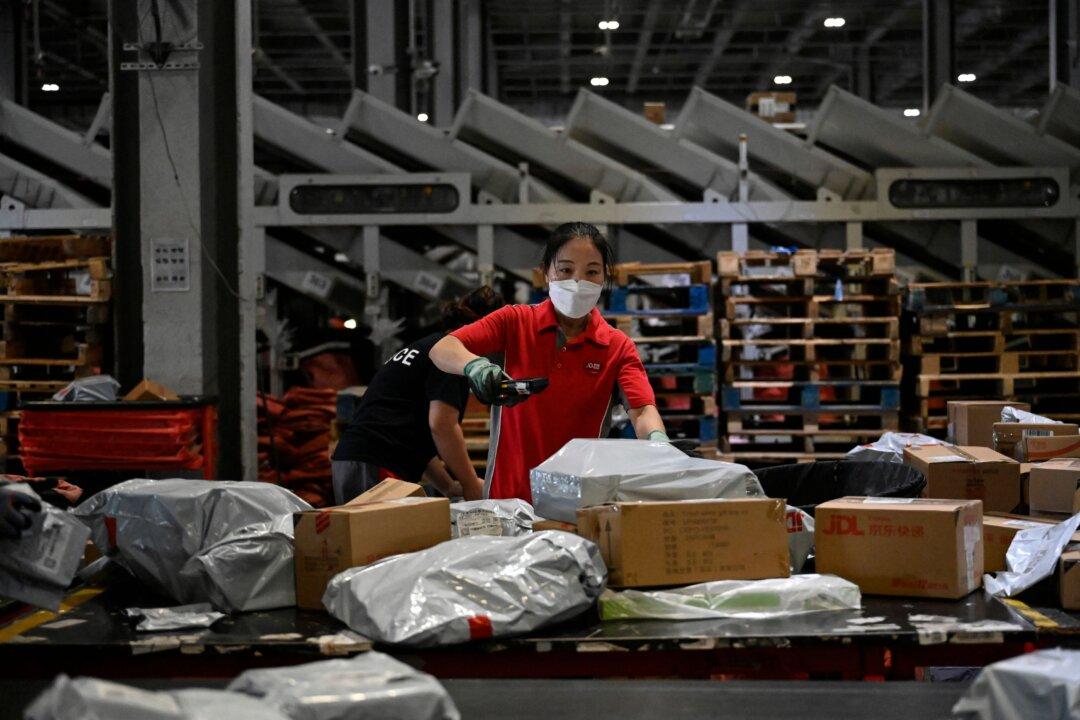Rising local government debts and a sluggish economy fuel concerns about a debt bubble in China. Experts assert that Beijing must either initiate an extensive debt restructuring plan for local governments or curtail their role in bolstering economic growth.
The surge in local government borrowing has put China’s huge debt pile in the spotlight, with analysts and investors urging policymakers to abstain from the old playbook of loading up on more debt to spur short-term growth and instead deal with the problem of possible defaults.
According to ANZ estimates, China’s local government debt had reached $12.8 trillion (92 trillion yuan), or 72 percent of GDP in 2022. This includes $4.9 trillion in official local government bonds, with the remainder comprising local government funding vehicle (LGFV) debt—a “hybrid” form of financing backed by an implicit guarantee.
Onshore bond issuance, as per a recent Moody’s estimate, in the first half of 2023 increased by 4 percent compared to the same period in the previous year. The increase in this issuance volume was driven primarily by LGFVs, said a Moody’s client note, adding that it is expected to increase further in full-year 2023 compared to last year.
Nonetheless, as indicated by a Bloomberg report, China’s overall government debt had swelled to approximately $23 trillion by May 2023, according to estimates from Goldman Sachs Group. The figure includes the hidden borrowing of thousands of LGFVs set up by provinces and cities. This debt surpasses the nation’s GDP, estimated at $17.96 trillion in 2022, according to official data from the World Bank. It is projected to reach $18.73 trillion by the end of 2023, according to Trading Economics global macro models and analysts’ expectations.
“China appears to be on a fiscally diverging path as its debt to GDP ratio has been rising in recent years,” said Woon Khien Chia, an independent analyst and former senior portfolio manager at Niko Asset Management.
In her view, the primary concern for any government should be how to use debts to grow assets. In China’s case, a significant portion of the assets held by central, provincial, and local governments are not publicly traded or listed, making it challenging to gauge the comprehensive net asset positions.
Fiscal Imbalance
Furthermore, it’s concerning that substantial portions—roughly estimated at $890 billion—of the local government debts are coming up for payments this year, surpassing the expected average annual nominal GDP growth of $543 billion over the next decade. “At this level, the [China’s] debt problem is hitting a tipping point,” added the ANZ client note accessed by The Epoch Times.The escalation of local debt is a symptom of deeper structural problems in the economy, experts say.
As local governments are responsible for supporting social and economic activities, LGFVs have been commonly used as a major funding source, often involving land sales and property projects.
“Effectively, local governments were riding on debt raised by property developers, which are now in distress,” wrote Raymond Yeung, chief economist of the ANZ Group, in the client note.
That model is unsustainable as the funding is often used to invest in public services like sewage or other infrastructure that does not generate direct cashflow, he added.
Restoring Ties With US
Indeed, local governments aren’t self-sufficient partly because of their continually higher funding costs relative to returns on assets.Asset disposal, debt-equity swaps, and even funding haircuts for supporting China’s economic development could be some of the ways to deal with local governments’ debt obligations and also quicken the pace of debt reduction, wrote Yeung.
In September, for example, Reuters reported that local authorities in Jinan and Qingdao—two of the largest cities in China’s second-most populous province of Shandong—made additional residential properties available for sale in the open market.
“Even though there was a concern about the sudden increase in housing supply and the impact that may have on property prices, the local governments badly needed the revenue to meet financial commitments,” wrote Yeung.
In their bid to stave off a credit crunch and defaults, the largest state banks in China are also providing LGFVs with ultra-long-term loans with maturities ranging from 20 to 25 years, which include temporary interest rate reduction, according to reports.
“Another way to deal with its debt is to privatize or minimally corporatize its state-owned enterprises and more decisively dissolve the LGFV practice of the local governments,” says Ms. Chia.
However, for state-owned enterprises to operate commercially, China would need to grant their management the autonomy to pursue commercial objectives, which may not align with Beijing’s social and economic objectives, such as “common prosperity,” she adds.
From the perspective of economic growth, since both fiscal and monetary policies are constrained, “the other option is to reignite the external engines of growth—foreign trade and investments. That is likely to require finding ways to restore friendlier ties with the U.S.,” Ms. Chia concluded.







